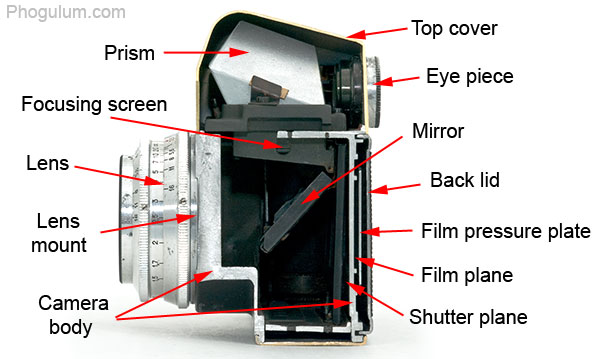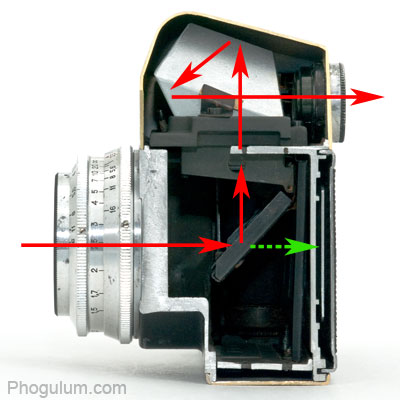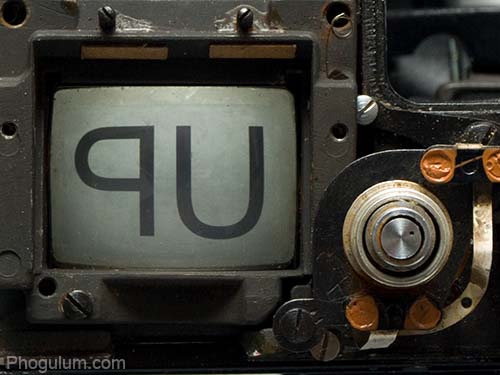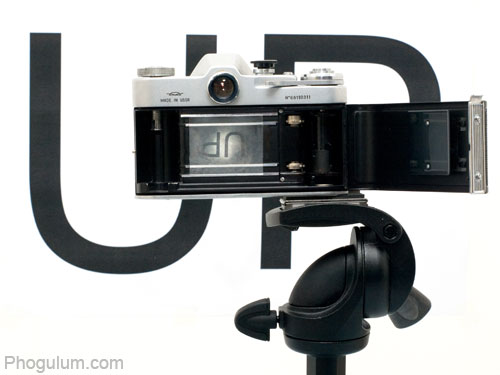Single-lens reflex (SLR) cameras are more complex than any other type of cameras. Viewfinders of other camera types are quite simple systems and usually have nothing to do with the main lens of the camera. In basic cases the viewfinder is just a rectangular-shaped hole and in more complex cases the viewfinder is somehow connected to the main lens for focusing purposes (twin-lens reflex (TLR) cameras for example), but still these systems are simpler than SLR cameras. So, how does a SLR camera work or what makes it so complex?
At first, lets take a look at the parts of SLR camera:

The key parts for the light to move through the camera are: lens, mirror, focusing screen, prism and eye piece. Probably you already know that the lens is made of several optical elements and it is for focusing the light on the film. The mirror is small and light, capable of moving up and down. Focusing screen is made of ground glass and when image projected on it, the image becomes visible and doesn’t just go through as with regular glass. Sometimes the focusing screen also has some features that will help you focus the picture, but these are not important at the moment. The prism (its shape may vary, but the idea remains the same) is made of glass and it reflects the image from the focusing screen to the eye piece, which itself is just a piece of glass or simple lens, that you are looking through.
Now this next picture shows the light’s path through the camera:

The red arrows are representing the light during the composing of the photo and the green arrow is the path after actually pressing the button and taking the picture. The actions that occur on that photo taking process are: mirror moves up, shutter opens, shutter closes and mirror moves back down. Have you noticed that when taking the picture with a SLR camera, the viewfinder goes black for a moment? That’s the mirror in upper position closing the focusing screen and preventing an extra light from getting through the eye piece while the shutter is open.
But why is there a prism above the focusing screen and not another simple mirror?
This photo shows the focusing screen of the camera and image of the simple word “UP” on it.

As you can see, the image is mirrored. If there would be another mirror instead a prism, the image in the viewfinder would be upside down (you can try it with a small mirror and this image on the screen). So, the prism mirrors and turns the image back straight as you can see it without the camera. But still, if one mirror flips the image upside down and the second one would turn it around again, the image would still be on its head? Because, that’s how the lens works. And you may not know this, but all your images on the film are also upside down as the last photo shows.

So, these are the basic principles how SLR cameras work. DSLR cameras are mainly the same, just that there is a digital sensor instead a film. And of course much more electronics and stuff.
The camera on the photos (yes, the half cut one too) is Zenit 3M. If you want more information about this camera, you are welcome to visit the Zenit 3M page.